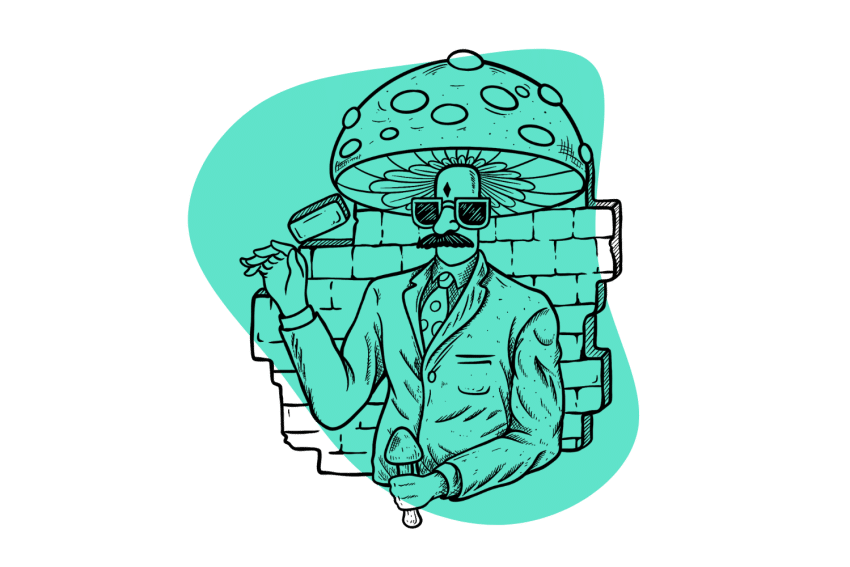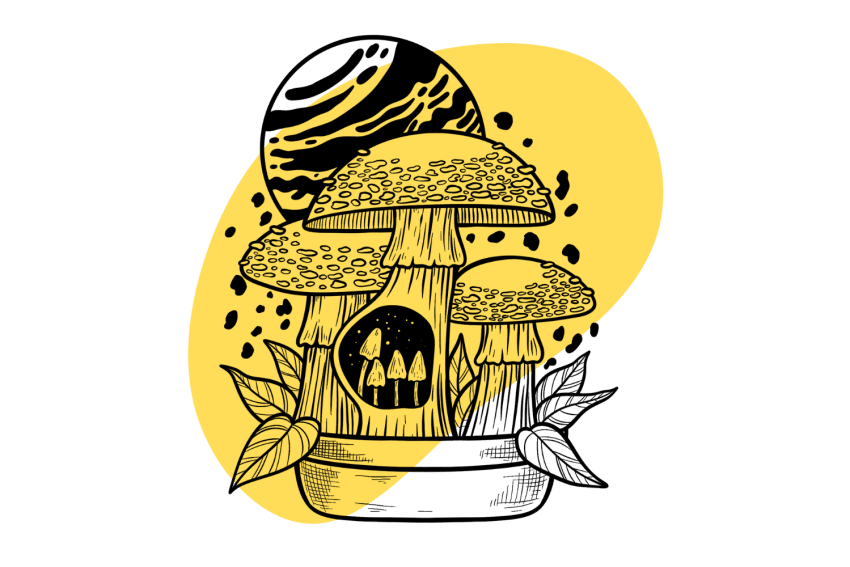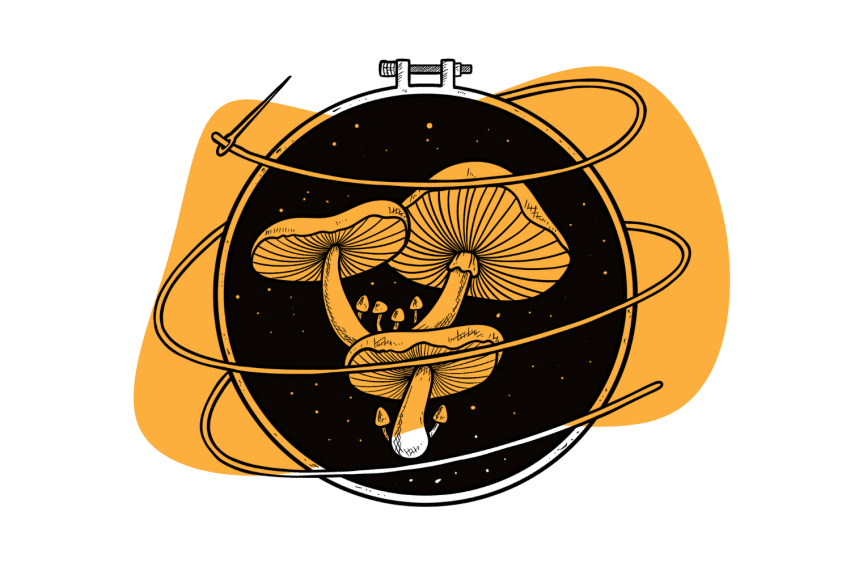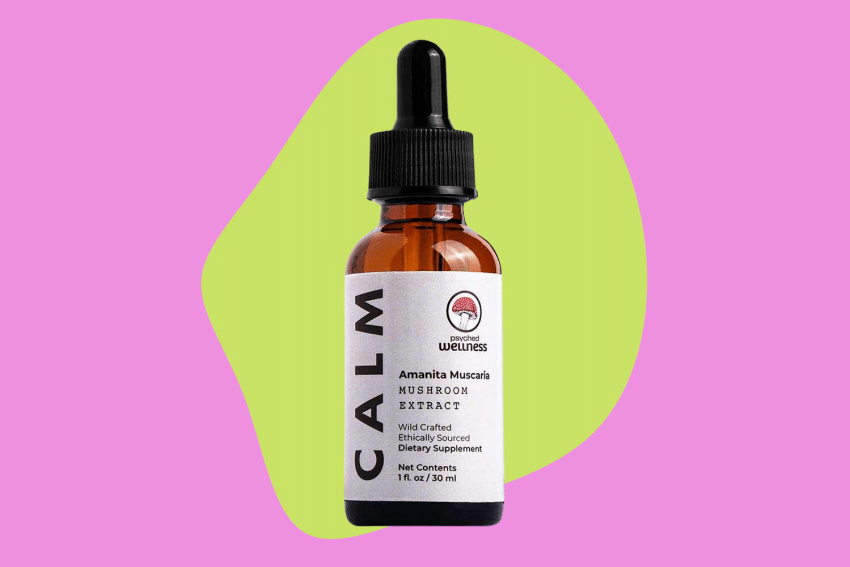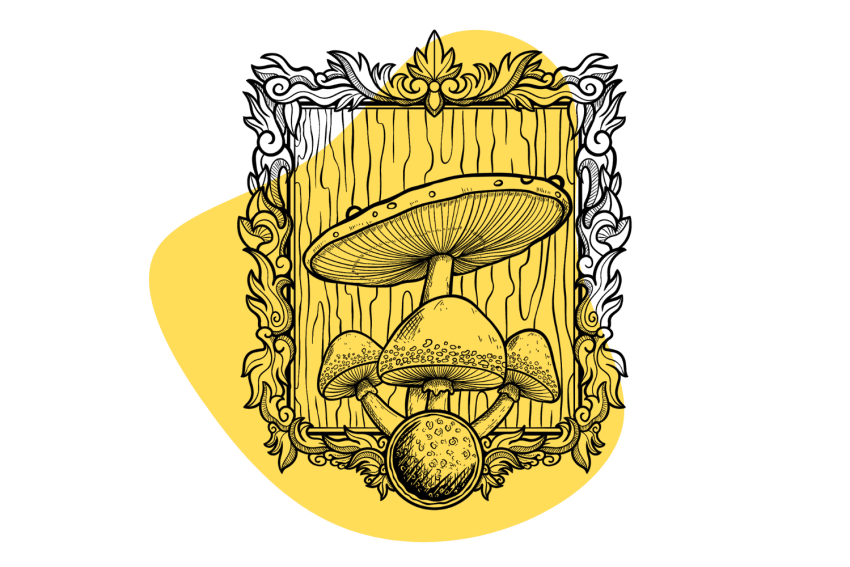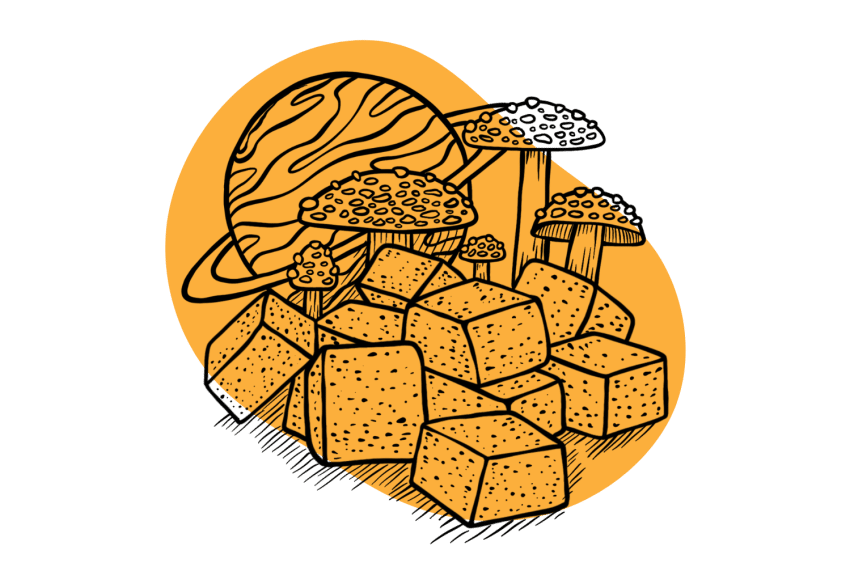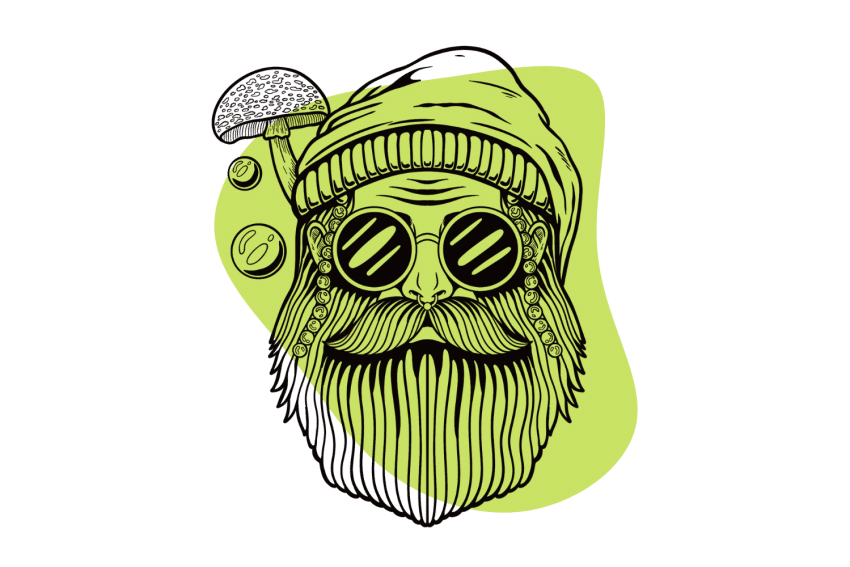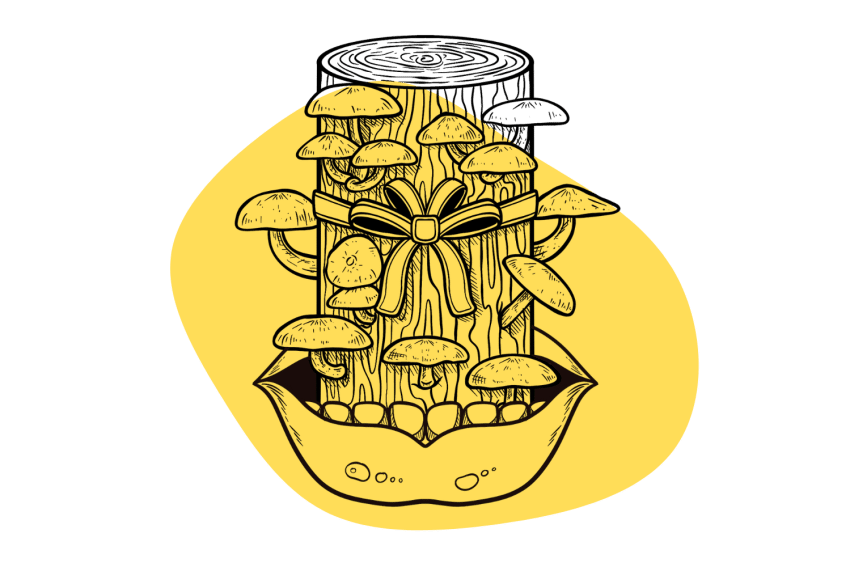Where To Buy Fly Agaric Mushrooms: Amanita muscaria for Sale
Amanita muscaria mushrooms are a powerful dream enhancer and mild dissociative psychedelic. Learn more about this mushroom and where to buy them online in this article…
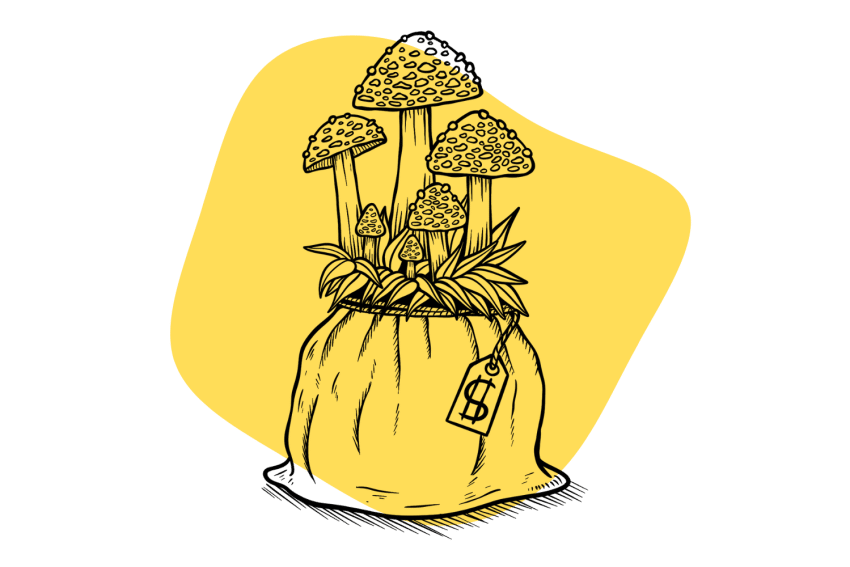
Amanita muscaria — otherwise known as Fly Agaric — is a psychoactive mushroom species that’s legal in most countries. Unlike typical “magic mushrooms,” Amanita shrooms don’t contain psilocybin or psilocin.
The active compound in Amanita muscaria mushrooms is muscimol — a legal compound capable of bridging the gap between reality and dreams.
These mushrooms can alter perception and induce dreamlike states of consciousness (oneirogenic). Although not as hallucinogenic as psilocybin mushroom species, Fly Agaric is powerful.
So, where can you buy Amanita muscaria mushrooms online?
In this article, we’ll be looking at five of the best vendors and brands to buy Amanita muscaria mushrooms from. I’ll also explain the active components, effect profile, preparation techniques, and how to find these shrooms in the wild…
Top 5 Amanita muscaria Vendors
Sourcing high-quality Amanita muscaria can be difficult. Several companies are trying to profit off the “legal shroom boom” and don’t care so much for their customers. Luckily, there are some legitimate brands out there.
Here are the top five best places to buy Amanita muscaria mushrooms, extracts, and edibles:
1. Area 52 (Magic Pluto Mushroom Gummies)
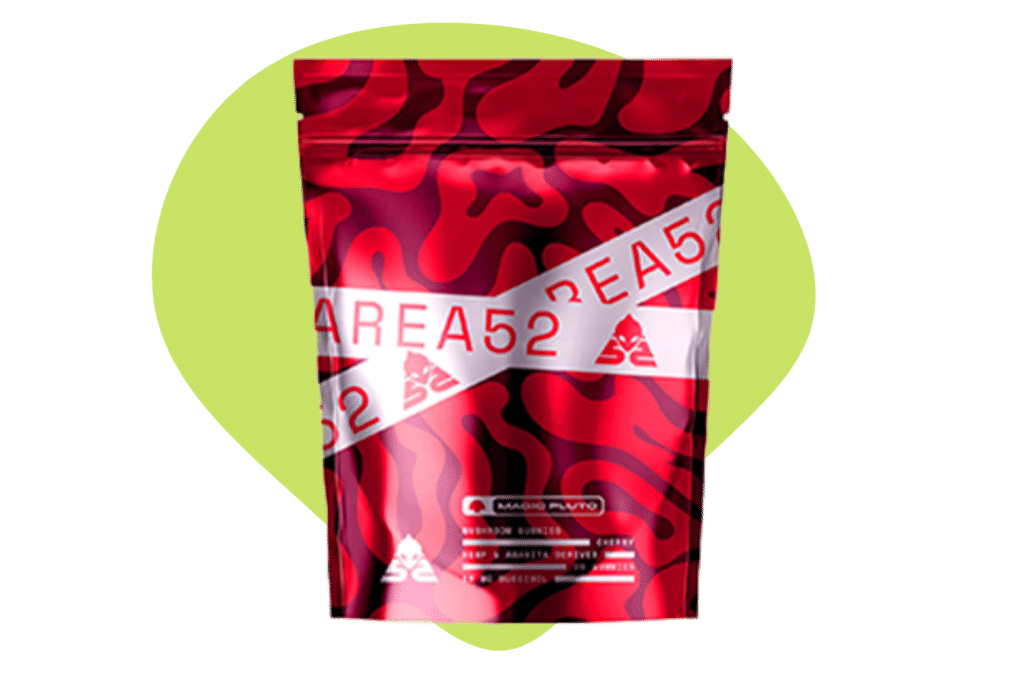
Area 52 is a supplement brand that sells a range of functional gummies and tinctures. They’ve been bringing high-quality cannabinoid products to the market for years and they’ve since expanded to the legal shroom market.
The Magic Pluto gummies from Area 52 are among the strongest on the market. They contain a high-quality muscimol extract from wild-harvested Amantia muscaria mushrooms, as well as seven additional potentiating and supportive ingredients.
If you’re looking for genuine Amanita gummies that are capable of inducing intense dreamlike effects, Area 52 is the best place to go.
Area 52 Magic Pluto Mushroom Gummies Specs
| Tripsitter Ranking | 10/10 |
| Trust Score | 10/10 |
| Cost | $69 |
| Best Product | Magic Pluto Gummies |
4. Psyched Wellness (CALM Tincture)
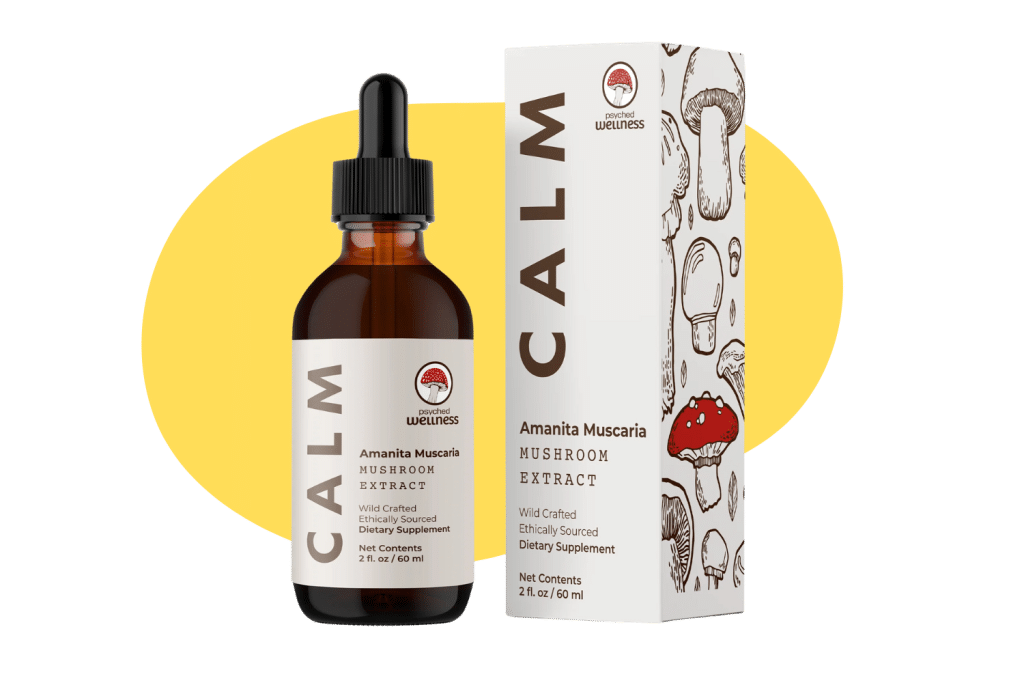
Psyched Wellness is an Amanita brand that manufactures “Calm” — a high-quality Amanita muscaria tincture.
The tinctures are made from wild-harvested Amanita muscaria mushrooms. Each 2 ml serving contains 54 mg of Amanita muscaria — this equates to a muscimol level between 4 and 8 mg. They come in 30 ml bottles (15 servings) and 60 ml bottles (30 servings).
Psyched Wellness doesn’t offer any other Amanita muscaria products — focusing on quality over quantity. If you’re looking for an all-natural Amanita muscaria tincture, Psyched Wellness is the place to go to.
Read the full, in-depth review of the Psyched Wellness CALM Tincture here.
Psyched Wellness Specs
| Tripsitter Ranking | 10/10 |
| Trust Score | 10/10 |
| Cost | $64.99 |
| Best Product | Calm Tincture |
3. Wild Forest Herbs (Dried Amanita Caps)
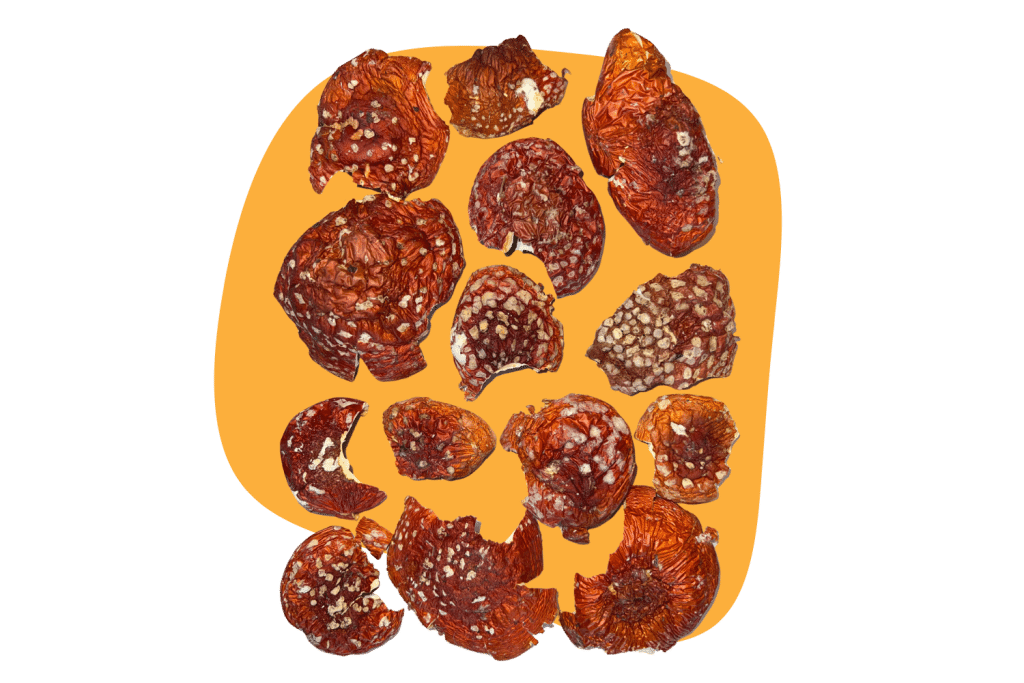
Wild Forest Herbs is the best place to buy dried Amanita muscaria caps.
All of the Amanita caps offered by Wild Forest Herbs are hand-harvested from Alaska and the Colorado Rocky Mountains. The caps are dried in a stainless steel dehydrator with continuous airflow and a temperature of 115 ℉ (46℃). They’re stored in a temperature-regulated dark environment before sale.
A range of different options are available on the website, including “premium” caps that are perfectly round, clean, and colored, as well as “dirty caps” and “broken caps” at a discounted price. Bulk Amanita muscaria pieces and powder are also available for a lower price.
If you’re searching for high-quality dried Amanita muscaria mushrooms for making extracts, tinctures, or teas, Wild Forest Herbs is the best place to look.
Wild Forest Herbs Specs
| Tripsitter Ranking | 10/10 |
| Trust Score | 10/10 |
| Cost | $20–$46 |
| Best Product | Premium Amanita muscaria Caps |
4. Mushroom Holistic (Amanita pantherina Capsules)
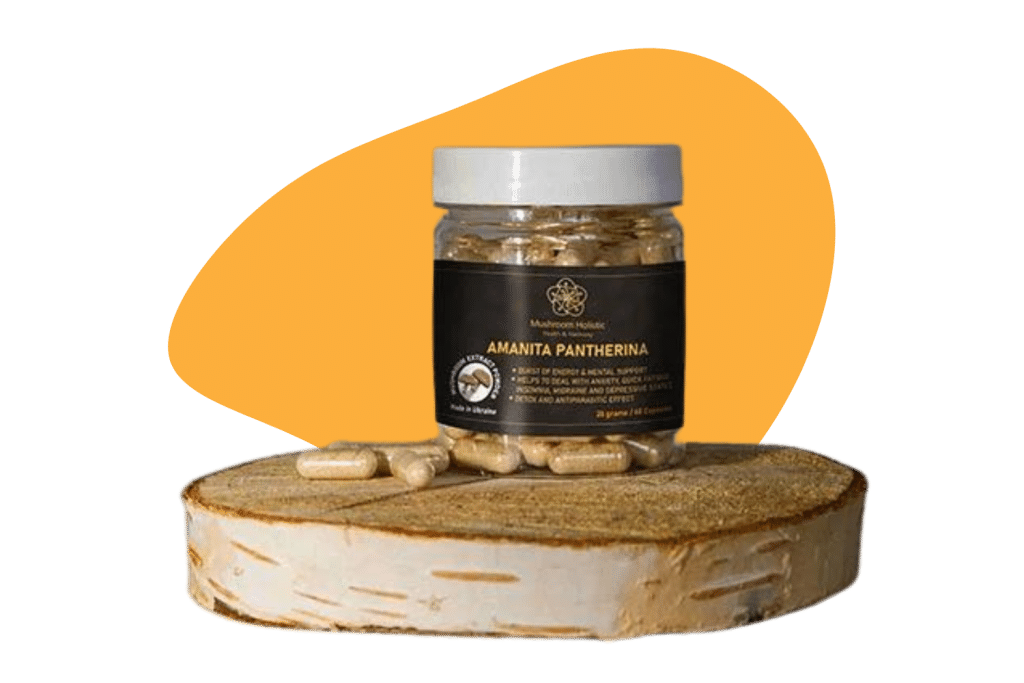
Mushroom Holistic sells a range of dried Amanita muscaria and A. pantherina caps, as well as powders, capsules, chocolates, and infused oils. This company also sells a range of other medical mushrooms, such as chaga, cordyceps, and lion’s mane.
All of Mushroom Holistic’s Amanita mushrooms come from Europe, so delivery can take up to 14 days. They guarantee that all caps are free from sand, dirt, and debris, and are 100% natural.
Although the delivery times can be long, Mushroom Holistic’s prices are very reasonable — cheaper than most other quality Amanita vendors online.
Mushroom Holistic Specs
| Tripsitter Ranking | 9/10 |
| Trust Score | 10/10 |
| Cost | $24–$57 |
| Best Product | Amanita muscaria Powder (50g) |
5. MN Nice Ethnobotanicals (Amanita Gummies)
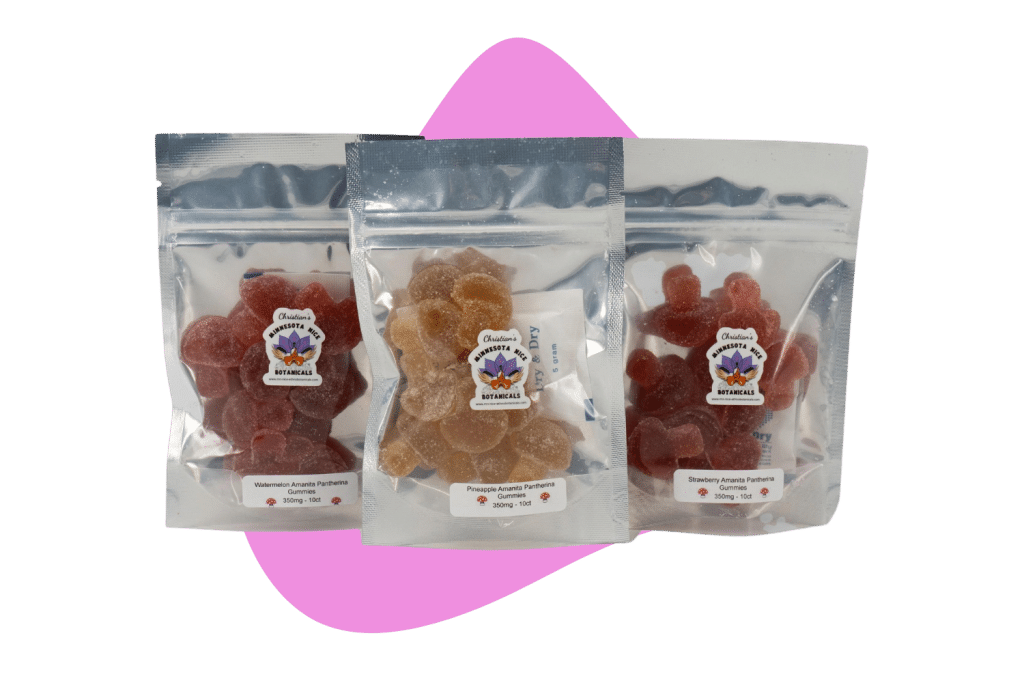
MN (Minnesota) Nice Ethnobotanicals is a small business specializing in Amanita products. It offers a range of dried Amanita muscaria caps, powders, tinctures, topicals, and edibles at very competitive prices. We especially like these 3000 mg gummies.
All of MN Nice Ethnobotanical’s Amanita products are all-natural, organic, third-party lab-tested, and made or harvested in the United States.
This is an excellent “one-stop-shop” for a variety of natural botanicals, not just Amanita mushrooms. If you’re interested in psychoactive and medicinal plants, mushrooms, and seeds, definitely give MN Nice Ethnobotanicals a look.
MN Nice Ethnobotanicals Specs
| Tripsitter Ranking | 8/10 |
| Trust Score | 9/10 |
| Cost | $11–$180 |
| Best Product | Amanita pantherina Caps |
What is Amanita muscaria?
Amanita muscaria is a psychoactive toadstool mushroom belonging to the genus “Amanita.” It’s easily recognizable due to its distinctive appearance — sporting a red cap covered with white wart-like spots. The cap is large and convex, flattening out through maturity.
You’ve probably seen this shroom before — it’s one of the most iconic and recognizable mushrooms on the planet. This species can be seen in various works of art, traditional Christmas decorations, and even in Alice in Wonderland and the Super Mario games. It’s even believed to share roots with the traditions around Santa Claus and Christmas.
Amanita muscaria grows in coniferous and deciduous forests across the globe. It can be found in the United States, Canada, and most of Europe, growing in numbers during the fall.
This mushroom is a mycorrhizal species — meaning it develops symbiotic relationships with certain tree species such as pine, larch, cedar, and birch. The fungus forms mutualistic relationships with the tree’s roots, enhancing nutrient absorption and water uptake from the soil in exchange for carbohydrates and sugars the tree produces through photosynthesis.
Amanita muscaria has a long history of shamanic use in traditional cultures across the Northern Hemisphere. Siberian shamans used the mushroom for its psychoactive effects, believing it allowed them to communicate with the spirit world. They are held in high regard for their potent dream-enhancing effects.
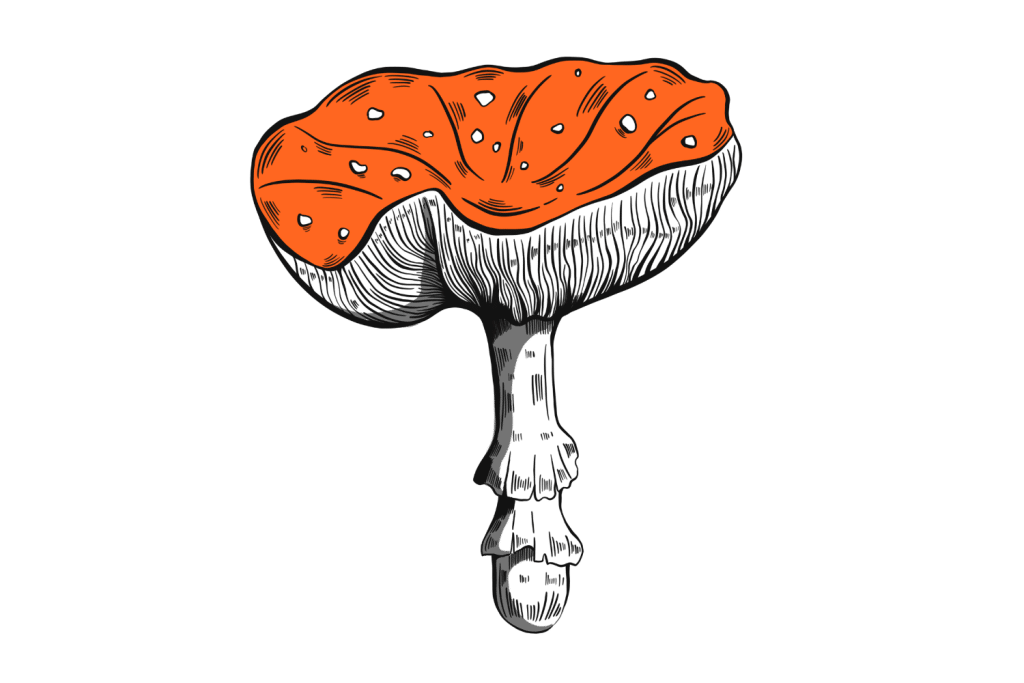
Active Components: Muscimol & Ibotenic Acid
The main psychoactive component in Amanita muscaria is muscimol. This compound could be considered both an oneirogen (a dream enhancer), dissociative, and mild deliriant.
Amanita muscaria also produces a muscimol prodrug called ibotenic acid — which is also psychoactive but can be toxic in large quantities (muscimol is not).
Amanita muscaria mushrooms must go through a process of decarboxylation to convert the ibotenic acid into muscimol before consumption. The concentration of ibotenic acid and muscimol in Amanita muscaria mushrooms is between 10–2845 ppm (parts per million) and 46–1052 ppm [1].
Converting ibotenic acid to muscimol is simple. All you have to do is dry the mushrooms under heat or boil them before drying them out.
Another toxic substance called muscarine is abundant in fresh Amanita mushrooms. This compound can cause blurred vision, increased salivation, lacrimation, abdominal cramping, diarrhea, and excessive sweating when toxic concentrations are ingested.
Luckily, muscarine is only found at 0.0003% in Amanita muscaria mushrooms, which is far too low to induce toxicity [2]. Muscarine is also eliminated through the decarboxylation process when mushrooms are prepared for consumption.
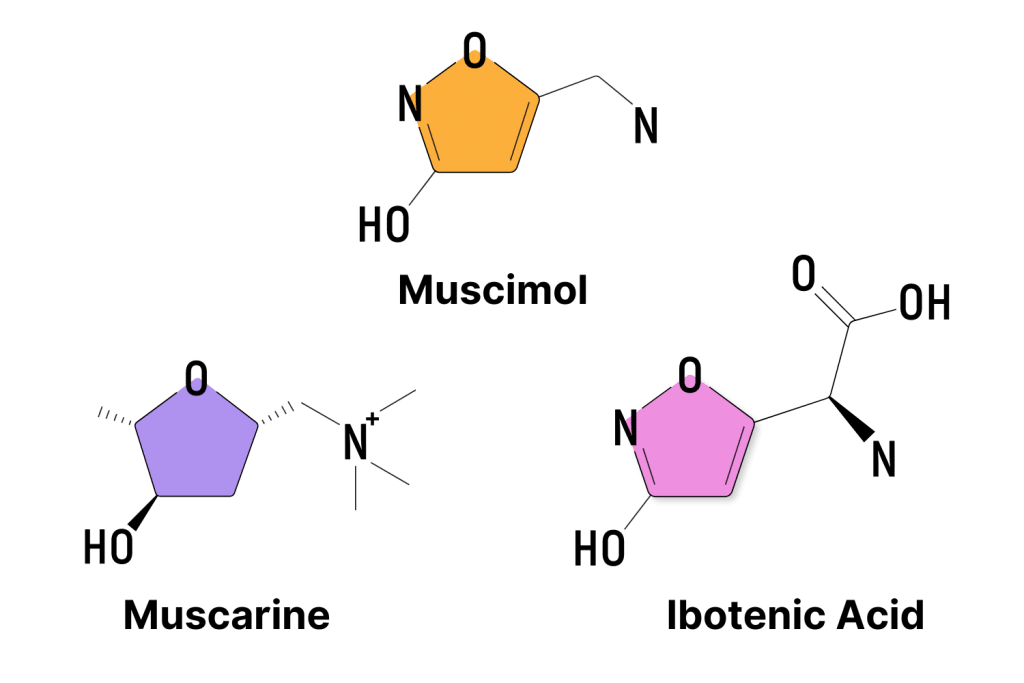
Amanita muscaria Effects
The effects of Amanita muscaria are unlike any other psychedelic substance. Unlike psilocybin mushrooms, Amanita shrooms don’t induce vivid hallucinations or mystical experiences. Instead, they alter one’s perception of size, distort time sense, and induce dreamlike effects.
The active compound in A. muscaria — muscimol — induces oneirogenic and deliriant effects by acting on the GABAergic, cholinergic, and glutaminergic systems.
After ingesting prepared Amanita muscaria mushrooms, waves of energy begin to rush over the body. This is due to the trace amounts of ibotenic acid that are present in decarboxylated shrooms and extracts. These energetic feelings fade away as time goes on, slowly becoming more sedative and “trippy.”
Users may experience altered perception where time doesn’t make sense, and objects appear larger, smaller, or further away than they are in reality. As the experience progresses, the effects become more dreamlike. It can be difficult to determine what’s a dream and what’s reality.
Around four hours after consumption of Amanita muscaria, the sedative effects cause the user to fall asleep. During sleep, the real “psychedelic experience” begins with dreams that are vivid, bizarre, and often indescribable.
Here’s a round-up of Amanita muscaria’s effects:
- Oneirogenic effects (dreamlike states of consciousness)
- Altered perception of time
- Altered perception of size
- Closed-eye hallucinations
- Disorientation
- Dissociation
- Sedation
- Increased dream activity
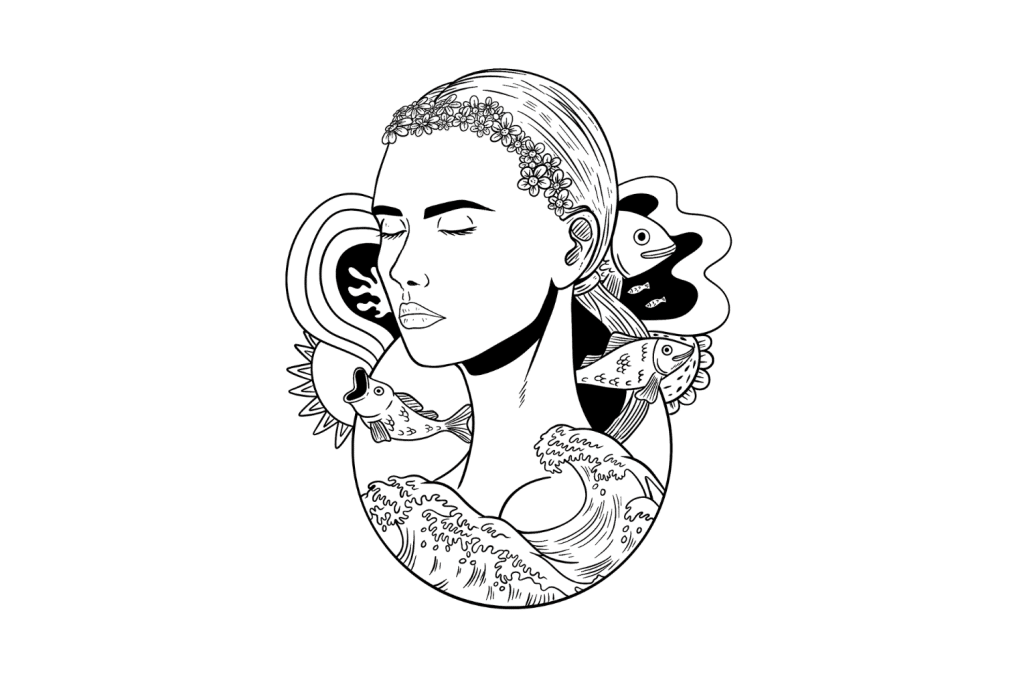
How to Prepare Amanita muscaria for Consumption
Unlike psilocybin mushrooms, Amanita muscaria must be prepared before it can be consumed. Without proper preparation, the concentration of ibotenic acid within the mushroom’s flesh is high enough to cause gastric symptoms such as nausea, vomiting, and severe stomach discomfort.
Most ibotenic acid present in fresh Amanita muscaria mushrooms can be converted into muscimol through a simple decarboxylation process.
Fresh mushroom caps can be heated and dried out using a dehydrator to convert as much ibotenic acid to muscimol as possible. Add a small amount of acid, such as vinegar or lemon juice, and gently heat-dry the mushrooms over 48 hours to prepare them for extraction.
Once the mushrooms have been decarboxylated with this method, most people will then extract the active components using alcohol.
Gently heating ground decarboxylated mushrooms in alcohol will ensure that the majority of the ibotenic has been converted. The alcohol and mushroom combination can then be left for several weeks in a cool, dark place — this allows time for the muscimol and other actives to dissolve into the alcohol.
After three to four weeks, the ground mushrooms can be removed using a coffee filter. The resulting tincture can be added to edibles or consumed sublingually by applying a few drops under the tongue.
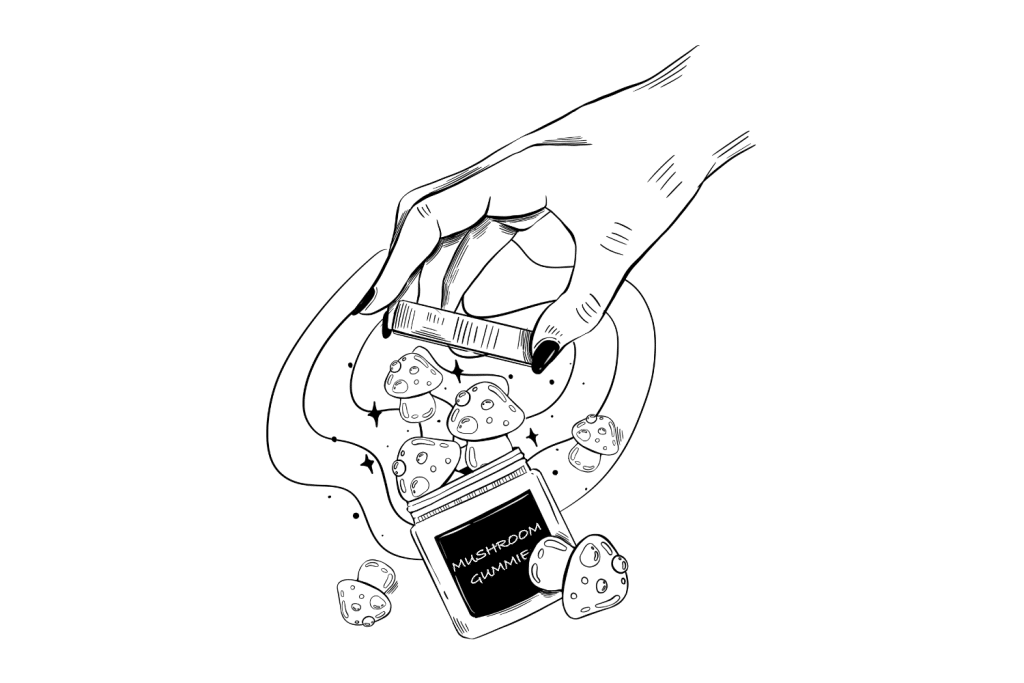
Amanita muscaria Gummies: A Simpler Alternative
If you’re not up to the task of preparing Amanita muscaria you’ve purchased or foraged for consumption, you may be interested in gummies.
Amanita gummies contain a muscimol extract obtained from wild-harvested A. muscaria mushrooms. They provide a tasty way to accurately dose with natural muscimol and experience the effects without the hassle of creating an extract.
Want to find out more about Amanita gummies?
Check out: Best Amanita muscaria Gummies Reviewed and Analyzed
Finding Amanita muscaria In the Wild
If buying Amanita muscaria mushrooms or gummies isn’t an option for you, or you’d prefer to be more self-sufficient, foraging for wild mushrooms may be an option. Amanita muscaria is one of the easiest mushrooms to identify. Its iconic red cap dotted with white wart-like spots stands out against the forest floor and is difficult to misidentify.
With that said, it’s essential to learn how to identify the species and its “lookalikes” with 100% accuracy before bringing any mushrooms home for consumption. Although there aren’t any species that share the same appearance as Amanita muscaria, some species share similarities. Other species in the same genus are also deadly, even if a small amount is consumed.
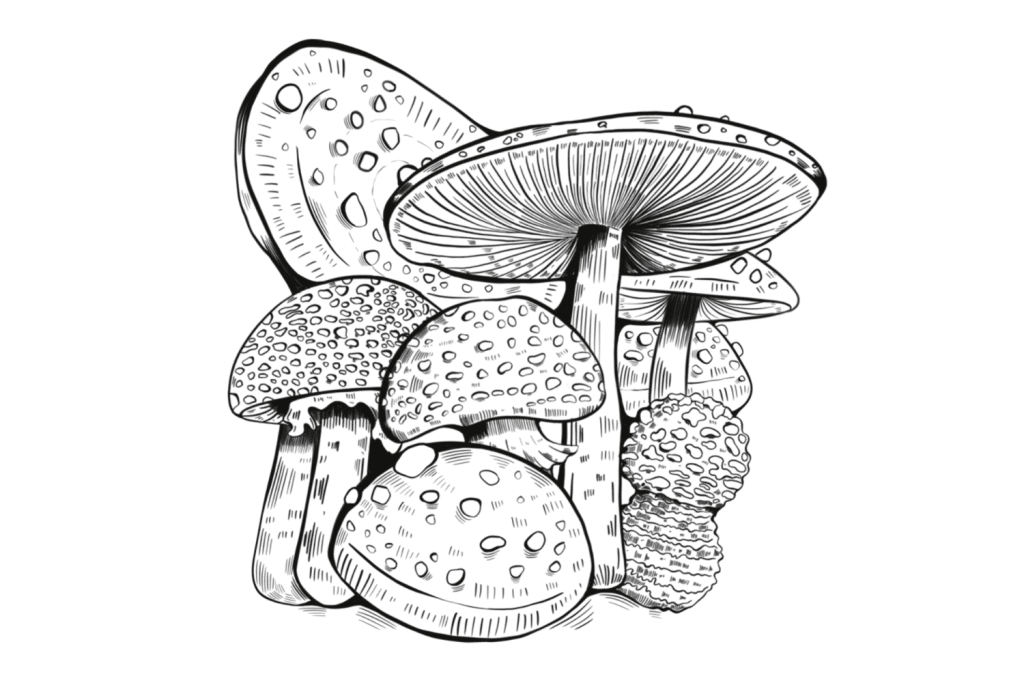
Where to Find Amanita muscaria Mushrooms
Amanita muscaria is a mycorrhizal species that develops symbiotic relationships with certain tree species. The fungus provides increased nutrient absorption for the tree and the tree provides carbohydrates and sugars made through photosynthesis.
You can find A. muscaria mushrooms growing close to the trees they form mycorrhizal relationships with. The most common trees this mushroom can be found with are pine, larch, oak, spruce, fir, birch, and cedar.
Amanita muscaria mushrooms grow during the fall months and can be found growing in temperate and subarctic climates across the globe. You can find these mushrooms in both deciduous and coniferous woodlands in the United States, Canada, most of Europe, the United Kingdom, and New Zealand.
They tend to appear quite early in the mushroom season, often springing up in mid to late August and lasting until mid to late November in the Northern Hemisphere. Going in search of these mushrooms once the heat of summer has passed and the rains of fall have begun can prove fruitful.
How to Identify Amanita muscaria Mushrooms
Amanita muscaria is a recognizable mushroom. It’s possibly one of the easiest mushroom species to identify, thanks to its unique physical characteristics. However, other species in the Amanita genus are highly toxic. They can be lethal if ingested so it’s extremely important you know how to identify them with 100% accuracy before heading out foraging.
I recommend purchasing a high-quality mushroom foraging guide and a local field guide for your area. This will allow you to learn about any potential lookalikes that may be present in your region and how to distinguish between them and A. muscaria.
With that said, here are the physical characteristics of Amanita muscaria mushrooms:
- Cap: Red, orange, or yellow with white wart-like spots. 10 to 20 cm in diameter, often flat and slightly concave when mature.
- Stem: 10 to 25 cm long and 1.5 to 2 cm in diameter. They’re white with a scaly texture and a large swollen base (basel bulb). A skirt-like annulus can be noted below the cap on most specimens but is not always present in mature mushrooms.
- Gills: White, free, crowded gills that turn pale yellow as the mushrooms mature and begin to sporulate.
- Spores: Spore print is white. Microscopic characteristics: ellipsoidal; 8.2-13 x 6.5-9μm; inamyloid.
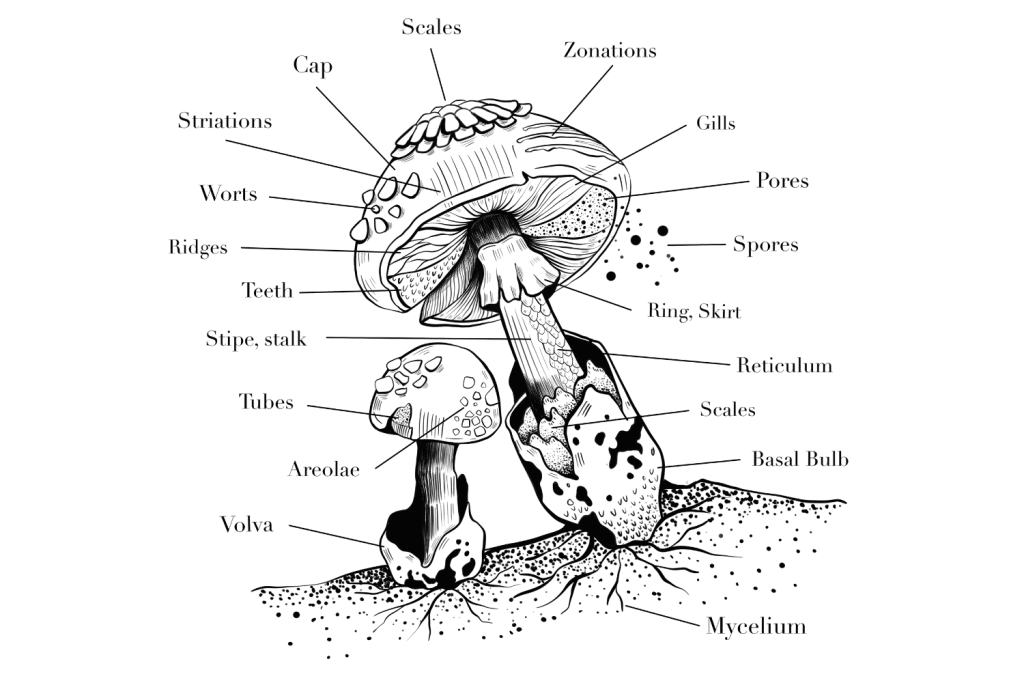
Lookalikes & Species to Watch Out For
Amanita muscaria is a unique mushroom species. There aren’t any mushrooms that look identical to this species. However, some could be misidentified by the amateur forager, and others aren’t as easily mistaken, but they can be lethal.
Watch out for these species:
- Russula emetica (The Sickener) — This species looks similar to A. muscaria. The mushrooms sport red caps, white stems, and are of a similar size. They don’t have white wart-like spots but may be confused for an Amanita muscaria shroom that has lost its spots after rainfall.
- Lycoperdon Spp. (Puffball) — Some species of Lycoperdon can be mistaken for Amanita muscaria mushrooms in the “egg phase” of their growth. During this phase, Amanita mushrooms are encapsulated in a universal white veil. These mushrooms should never be harvested while this young because it’s almost impossible to identify them.
- Amanita phalloides (Death Cap) — This species of Amanita doesn’t share the same cap color as A. muscaria, but it highlights the importance of proper identification. The “Death Cap” gets its name because a single bite can cause devastating effects, leading to organ failure and death.
- Amanita bisporigera (Destroying Angel) — This deadly mushroom bears a striking resemblance to edible varieties, featuring a pure white cap, stem, and gills. Its appearance can deceive foragers, and like the Death Cap, consuming it can lead to severe poisoning, organ failure, and potentially death due to its potent toxins.
- Amanita abrupta (American Blusher) — Characterized by its white to pale cap and the abrupt bulb at the base of its stem, this mushroom is often mistaken for other, more benign members of the Amanita family. While not as toxic as the Death Cap or Destroying Angel, it contains enough toxins to cause gastrointestinal distress and should be avoided.
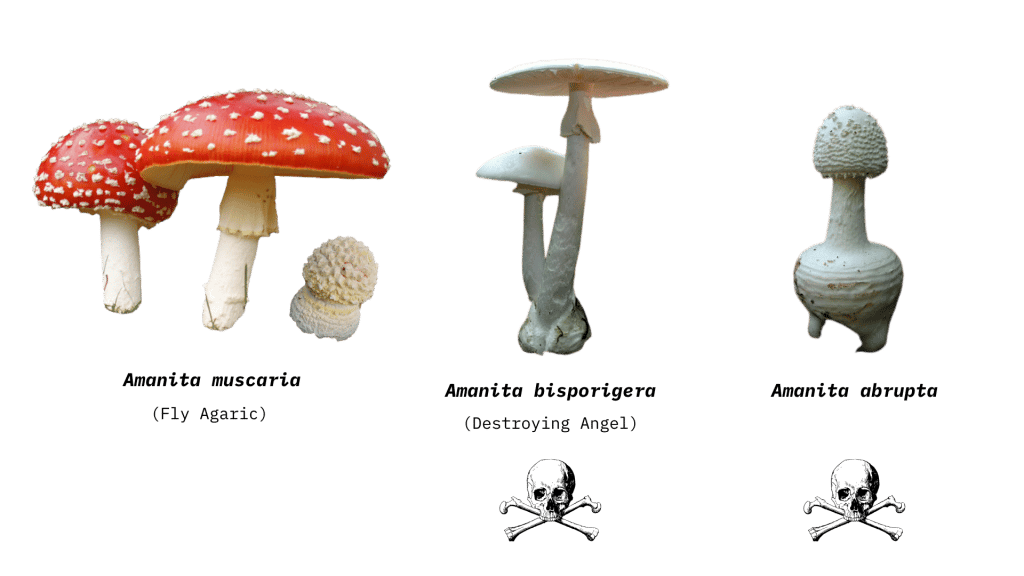
Frequently Asked Questions: Fly Agaric
Want to learn more about Amanita muscaria and other psychoactive mushrooms?
Read through the answers to some of the frequently asked questions we’ve received below. You never know; you might learn something…
If you have any questions you’d like answered, feel free to email us at feedback@tripsitter.com.
1. Is Amanita muscaria a “Magic Mushroom?”
Although Amanita muscaria could be considered a “magic mushroom” because it harbors psychoactive properties, it’s not one in the traditional sense of the term.
“Magic mushroom” is the term given to fungi that produce the psychedelic compound psilocybin. Fungi that produce this compound induce vivid hallucinations and powerful spiritual experiences. Although A. muscaria produces muscimol — a psychoactive compound capable of inducing dreamlike states — it doesn’t produce psilocybin.
So, although Amanita muscaria isn’t strictly a magic mushroom in the typical sense of the term, it could be considered “magic” due to its mind-bending ability to alter conscious and subconscious states.
2. Can You Grow Amanita Mushrooms at Home?
No. It’s not possible to cultivate Amanita muscaria in an artificial environment, and it’s extremely difficult (if not impossible) to do so outdoors.
Amanita muscaria — like Cantharellus cibarius (Chanterelle) and boletus edulis (Porcini) — is a mycorrhizal fungus. This means it develops symbiotic relationships with certain tree species, exchanging micronutrients for sugars made through photosynthesis. The conditions in which these relationships are made are impossible to recreate artificially.
There are “successful” cases where people have introduced Amanita muscaria mushrooms into their yards. Although in these cases, some mushrooms have been produced, after a season or so, the colony deteriorates and stops producing fruits.
Related: How to Grow Magic Mushrooms: The Easy Way
3. What’s the Difference Between Amanita muscaria and Psilocybe cubensis?
Both Amanita muscaria and Psilocybe cubensis could be considered “magic mushrooms,” but these two species are remarkably different in appearance, habitat, chemical profiles, and psychoactive effects.
Amanita muscaria is a mycorrhizal fungus that grows in conjunction with certain tree species, exchanging micronutrients for sugars produced by the tree during photosynthesis. They can be found in coniferous and deciduous forests growing close to the trees they form relationships with.
A. muscaria mushrooms have a large, bright red cap covered in white spots — remnants of a universal veil. They contain the toxic compound ibotenic acid — the precursor to muscimol which is a psychoactive compound that induces dreamlike effects.
Psilocybe cubensis is a saprotrophic fungus that grows on decaying organic matter. They can be found growing in grasslands on and near animal dung.
These mushrooms vary in shape and size but often boast a golden brown cap with a distinct nipple in the center. They have wavy, light-colored stems and stain blue when bruised. The active component in Psilocybe cubensis mushrooms is psilocybin — a highly hallucinogenic compound that’s capable of inducing intense psychedelic experiences.
Related: Do Amanita muscaria Mushrooms Contain Psilocybin?
4. Are There Age Restrictions for Purchasing Amanita muscaria?
Yes. There are age restrictions for purchasing Amanita muscaria mushrooms, extracts, and edibles online.
Like many psychoactive substances, A. muscaria mushrooms are subject to legal regulations that vary by country. Any reputable company selling Amanita muscaria products will ask for age verification upon entry to the website and proof of age during checkout.
- In the United States, you must be 21 years or older to purchase Amanita muscaria mushrooms, extracts, or gummies.
- In Canada, you must be 19 years or older to purchase Amanita muscaria mushrooms, extracts, or gummies.
- In the European Union (most countries), you must be 18 years or older to purchase Amanita muscaria mushrooms, extracts, or gummies.
References:
- Tsujikawa, K., Mohri, H., Kuwayama, K., Miyaguchi, H., Iwata, Y., Gohda, A., … & Kishi, T. (2006). Analysis of hallucinogenic constituents in Amanita mushrooms circulated in Japan. Forensic Science International, 164(2-3), 172-178.
- Michelot, D., & Melendez-Howell, L. M. (2003). Amanita muscaria: chemistry, biology, toxicology, and ethnomycology. Mycological research, 107(2), 131-146.

